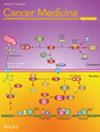There remains significant variability in the surgical management of thick melanoma patients with clinically node-negative disease. We evaluated factors influencing overall survival (OS) in these patients, focusing on the surgical management of the primary tumor and nodal basin.
Using the National Cancer Database, we identified 7647 patients diagnosed between 2012 and 2017 with thick melanoma (> 4 mm, T4) and clinically node-negative disease. 4332 patients had complete data and met all inclusion criteria. These patients were stratified into three groups based on nodal assessment: sentinel lymph node biopsy (SLNB), elective lymphadenectomy (ELND), or no nodal evaluation (NNE). OS was compared using Kaplan–Meier analyses and multivariable Cox proportional hazard regression.
In the cohort, 2851 (65.8%) had a SLNB, 799 (18.4%) had an ELND, and 682 (15.7%) had NNE. OS significantly decreased for each millimeter of increasing Breslow thickness. Ulceration, lymphovascular invasion, and tumor-positive SLN (+SLN) were associated with worse OS (all p < 0.001). The size of surgical margins was not significantly associated with OS. Five-year OS of patients with SLNB was 67.1% ± 1.2% compared to 57.9% ± 2.3% with ELND and 46.8% ± 2.5% with NNE (p < 0.001). Among +SLN patients, a complete lymph node dissection (CLND) was performed in 400 (62.3%) but was not associated with improved OS (p = 0.67) when compared to the nodal observation group.
Our results suggest that increasing Breslow thickness and nodal assessment provide important prognostic information regarding OS for thick melanoma patients, which emphasizes the importance of SLNB for staging and confirm the lack of benefit of CLND after +SLN in thick melanoma. The size of surgical margins did not affect OS.



